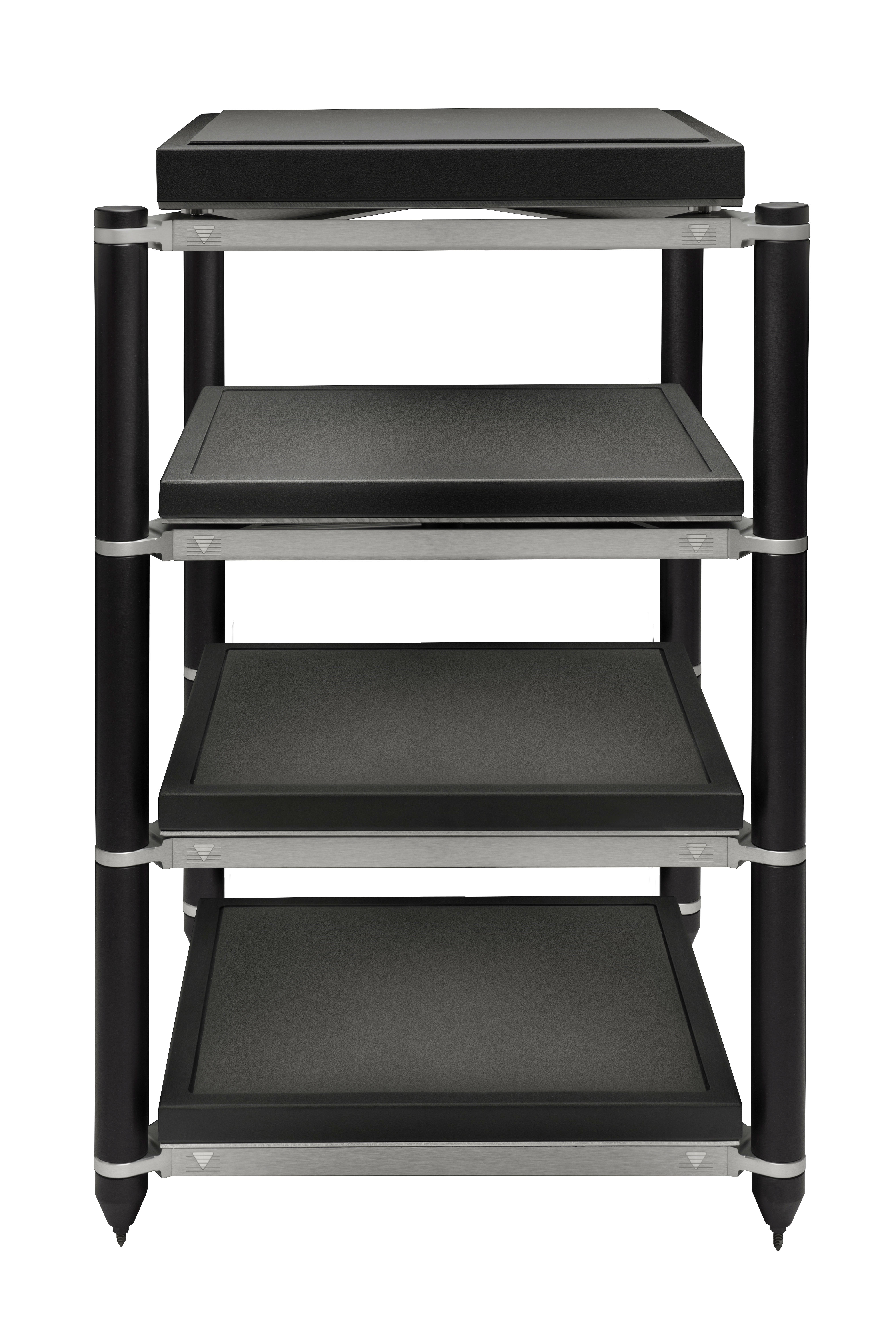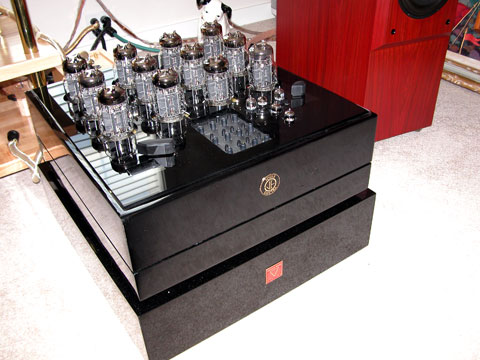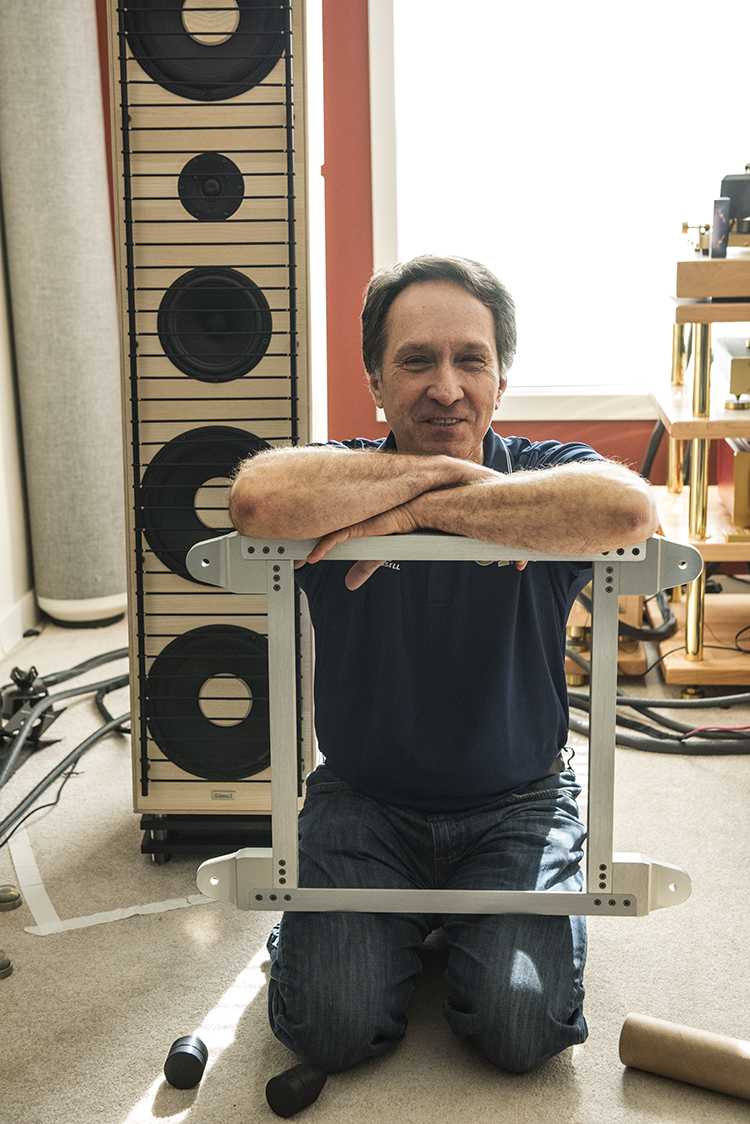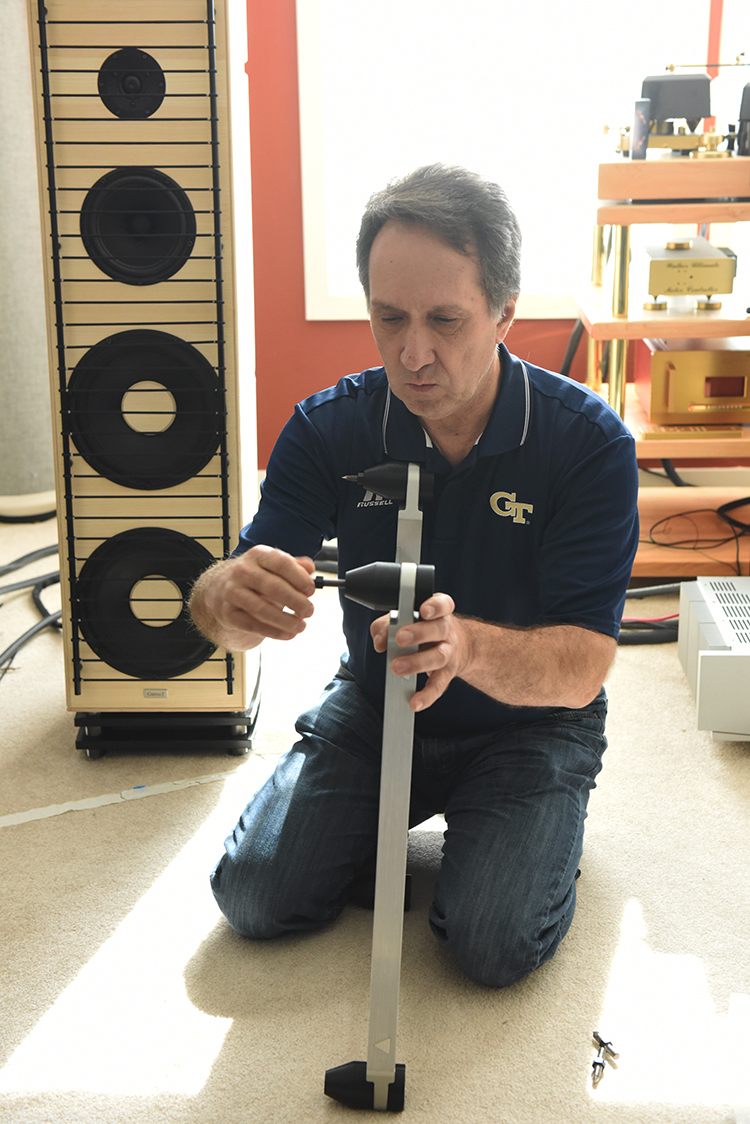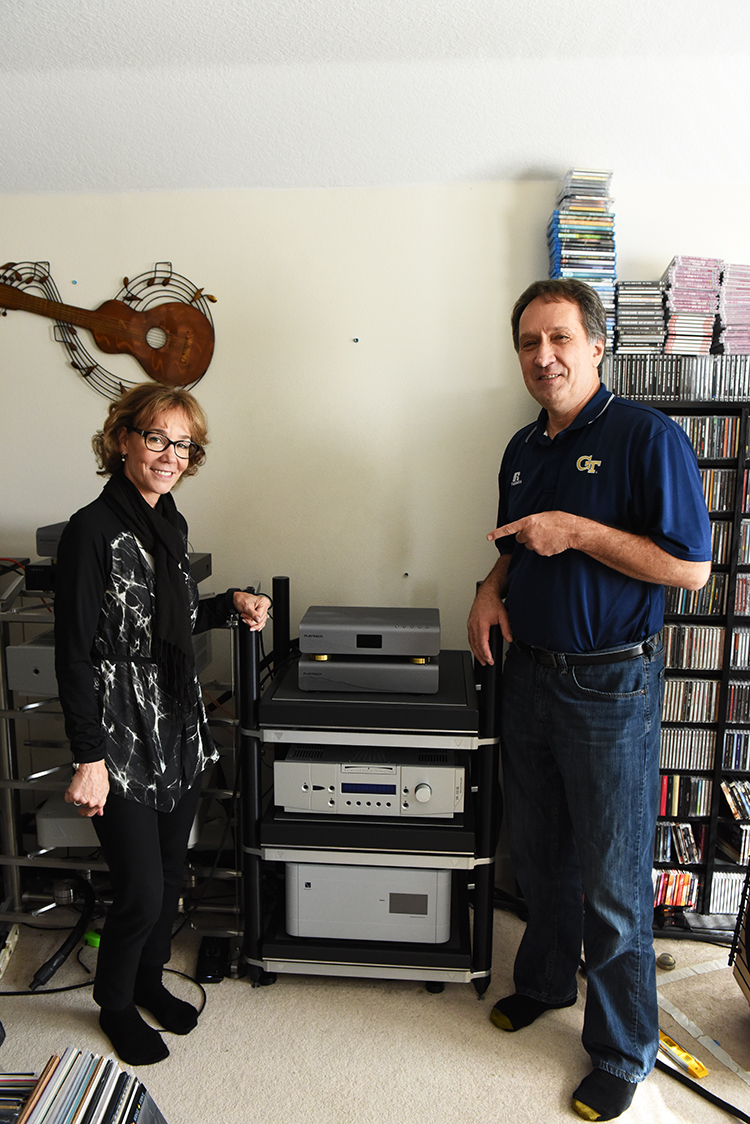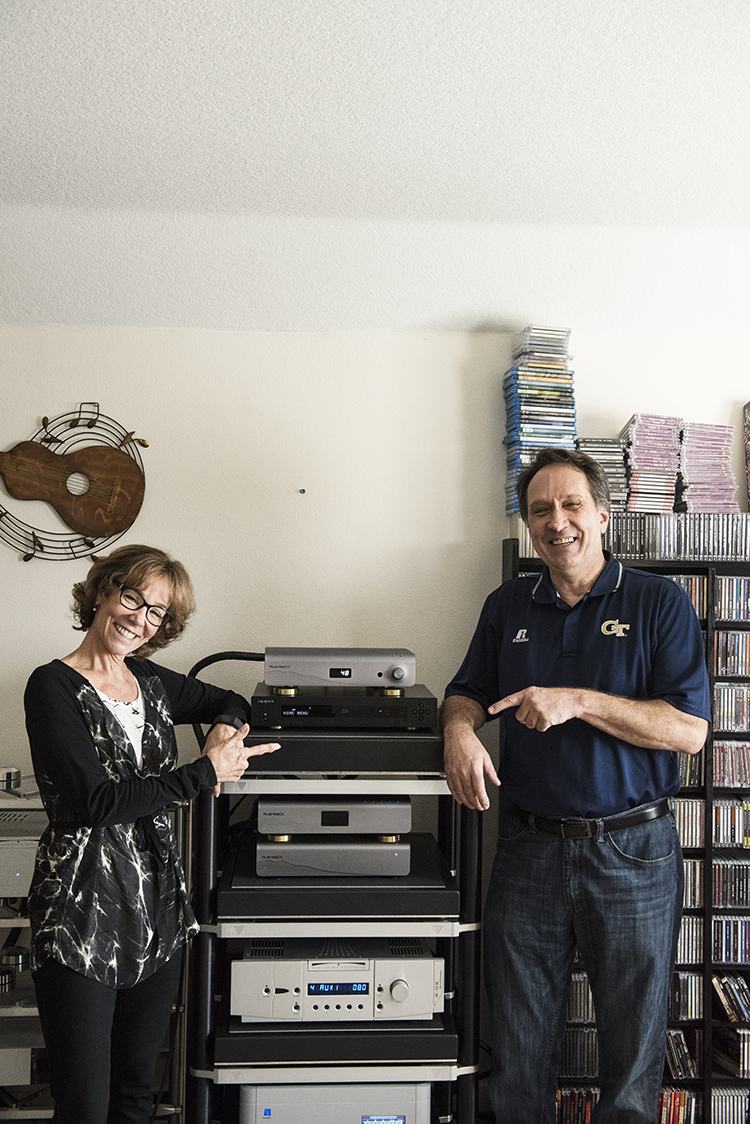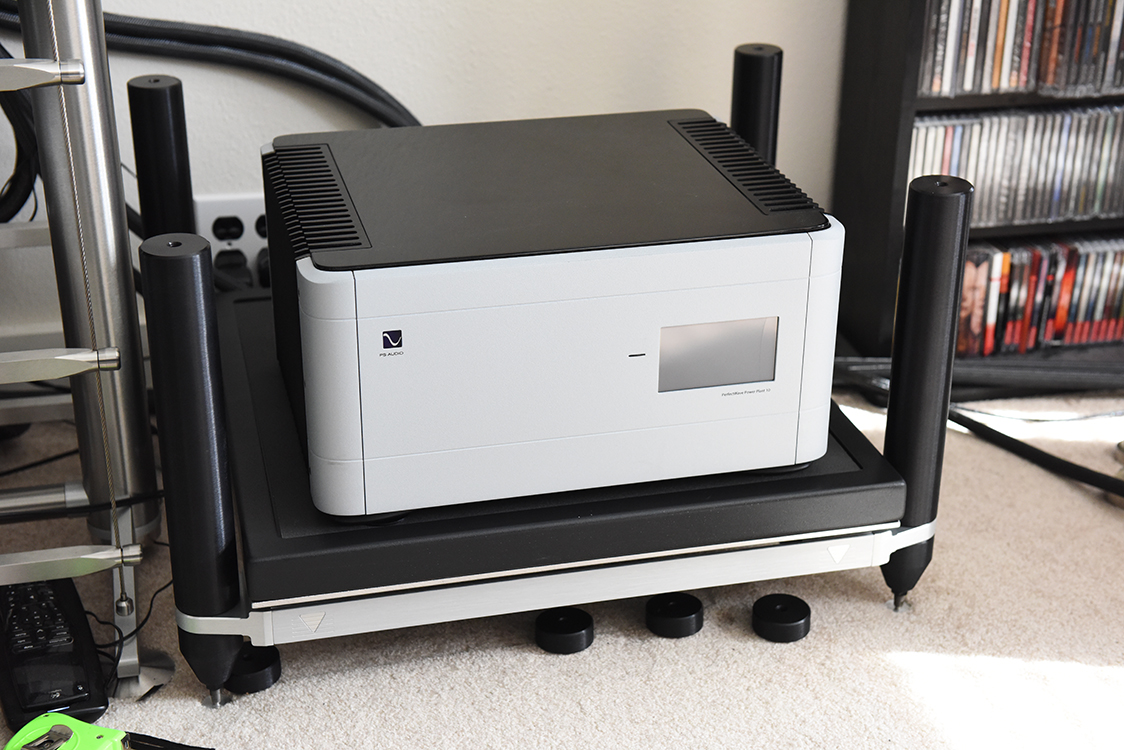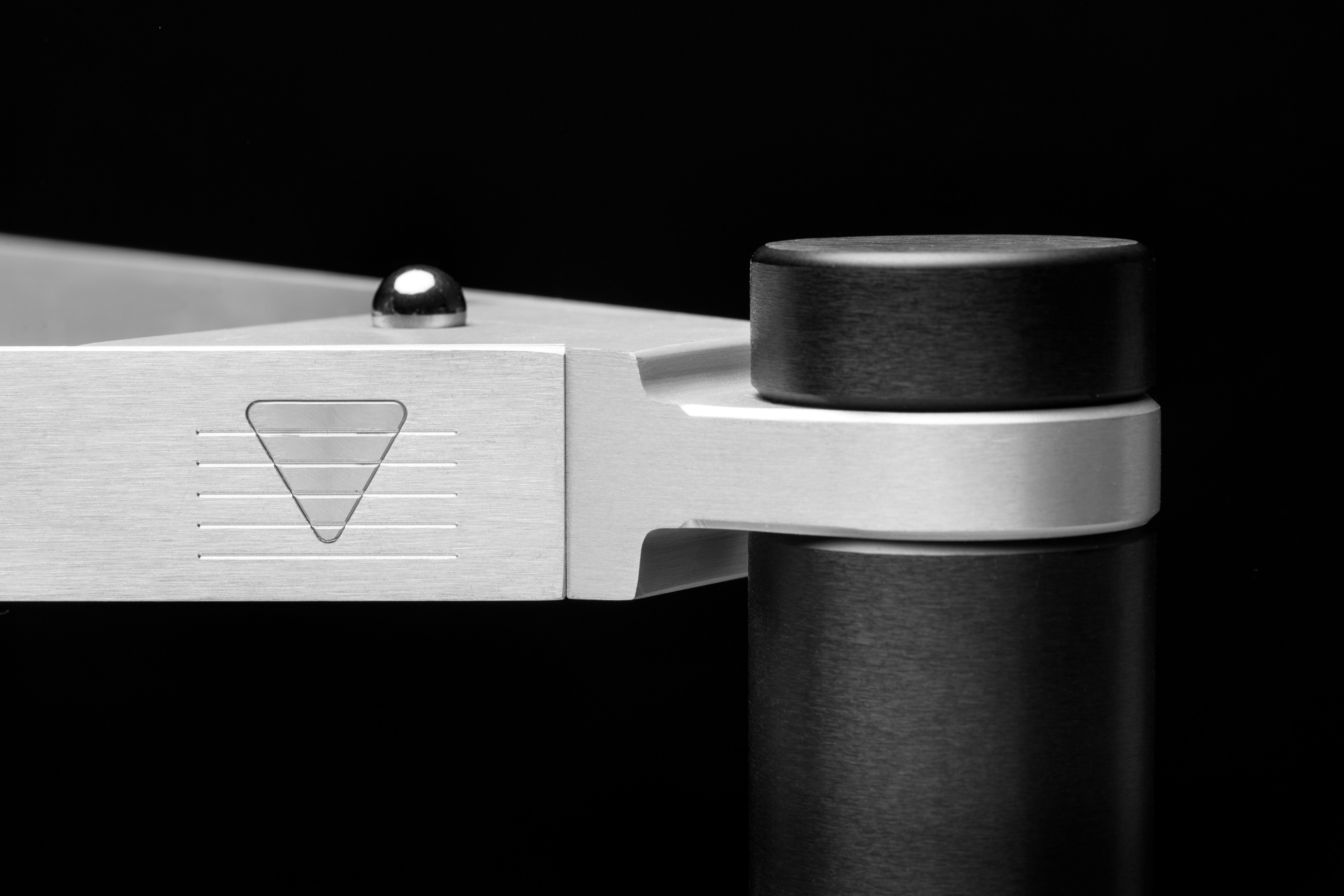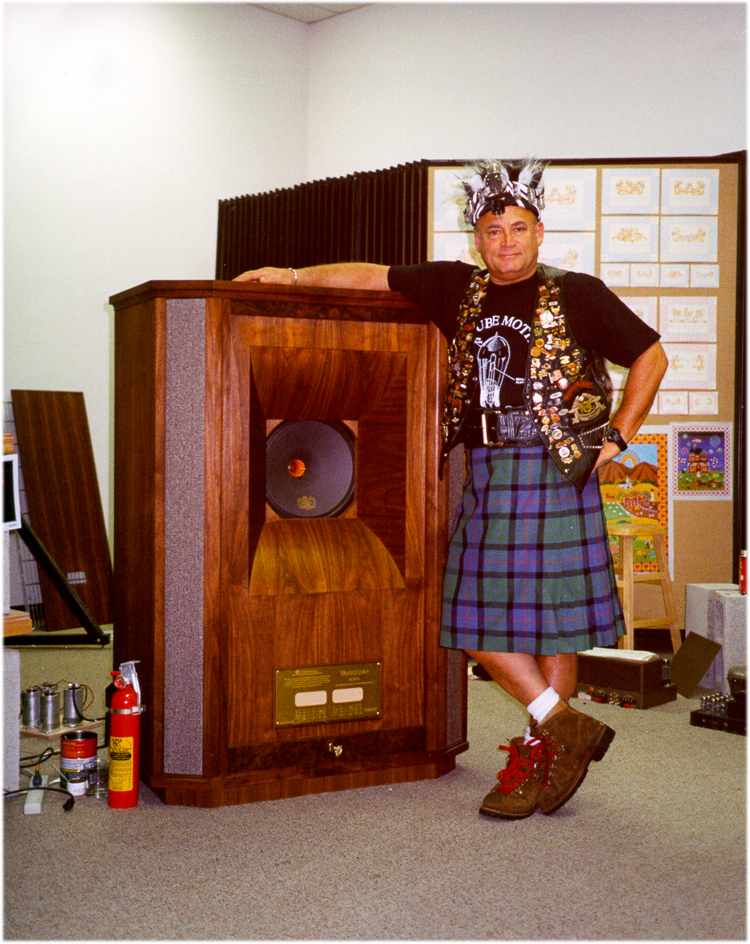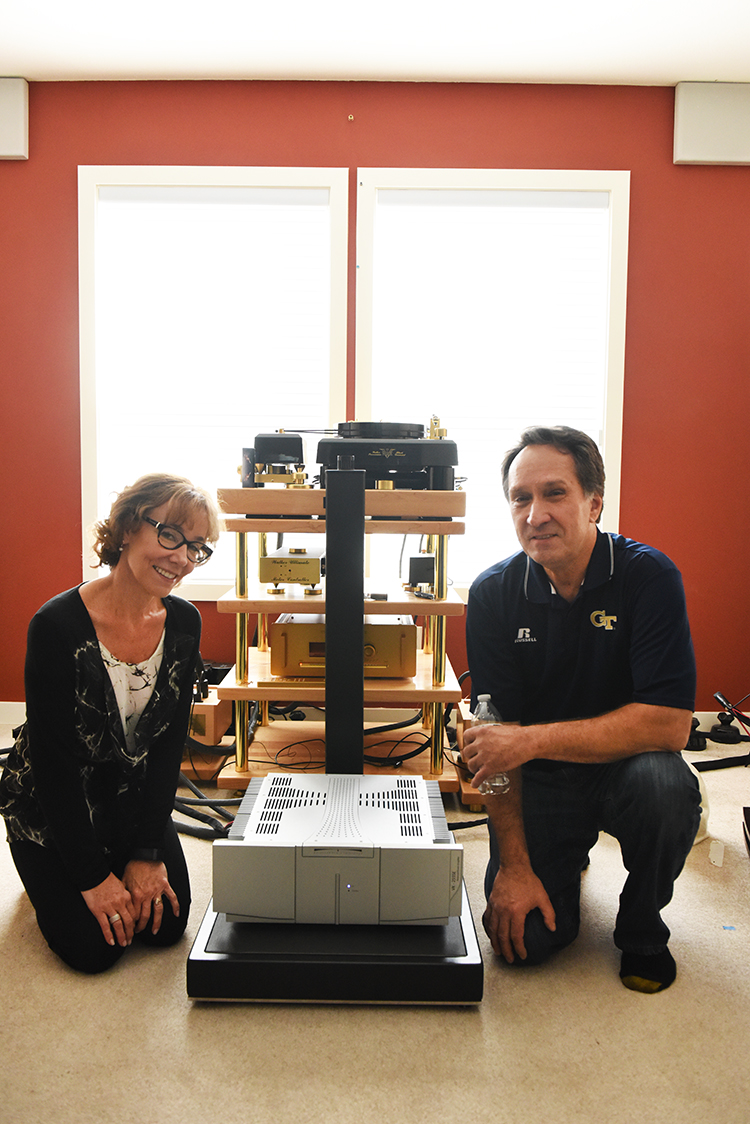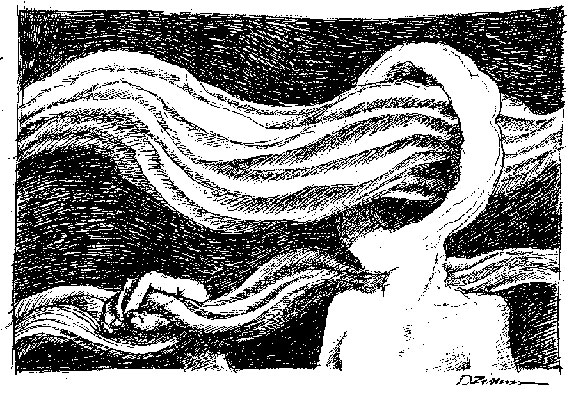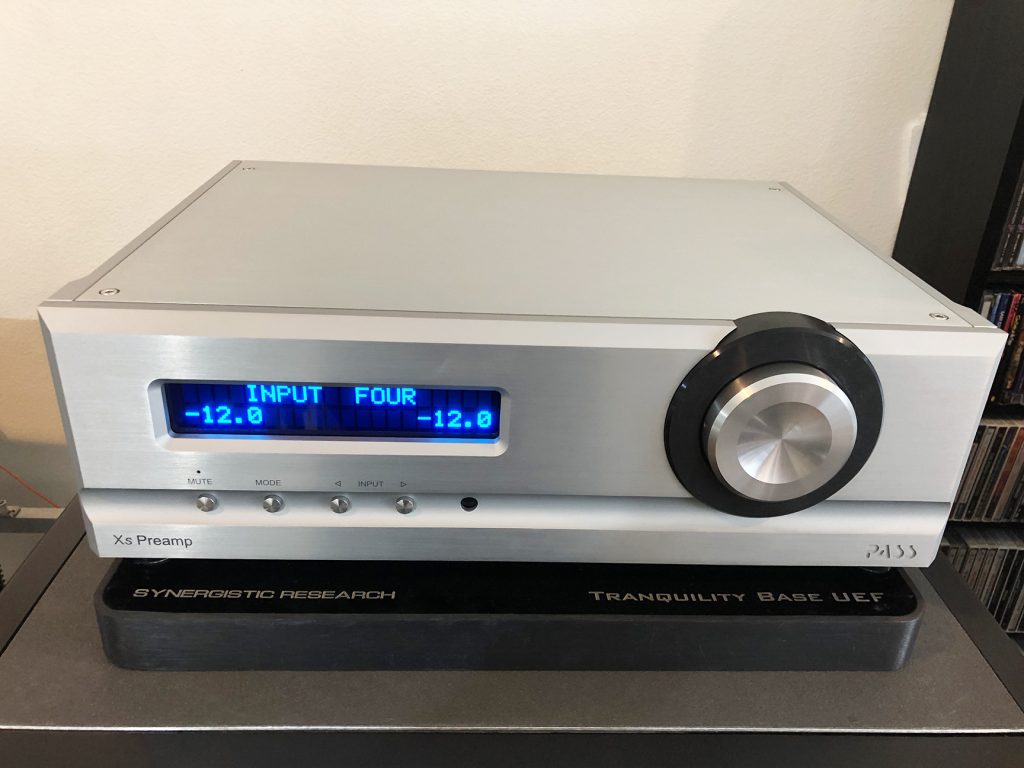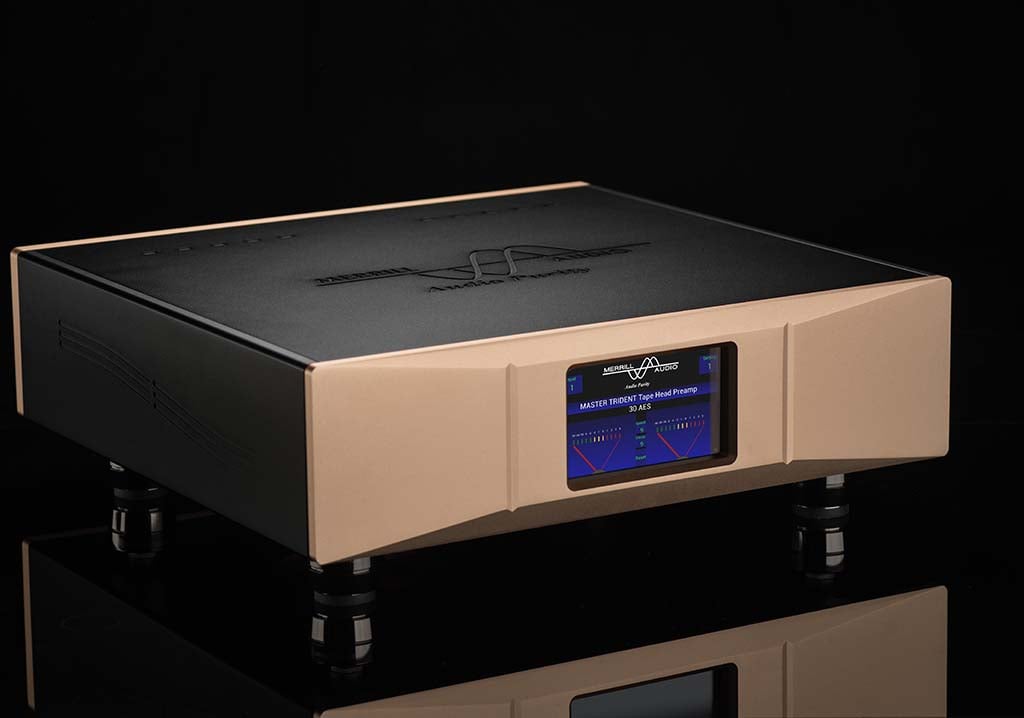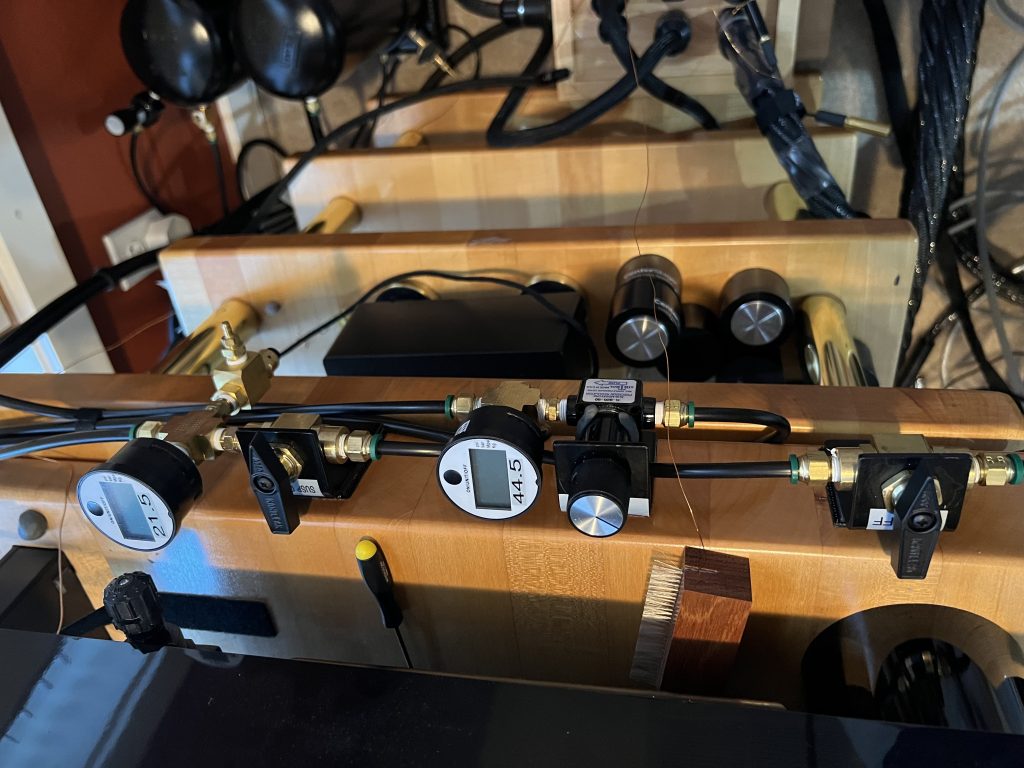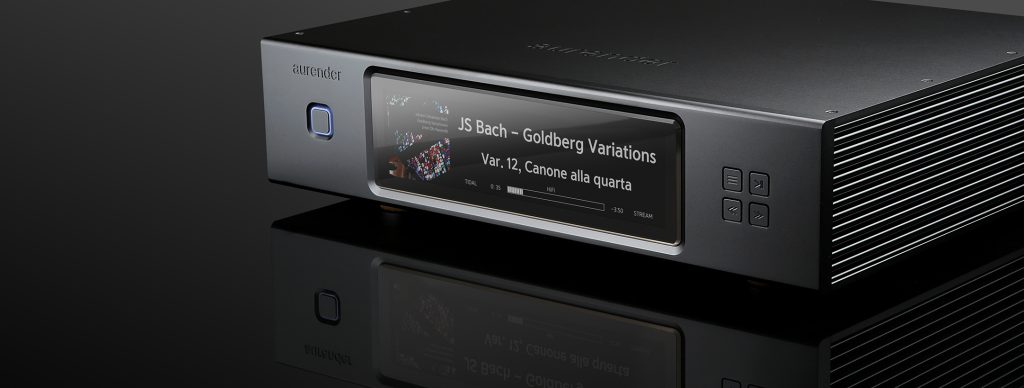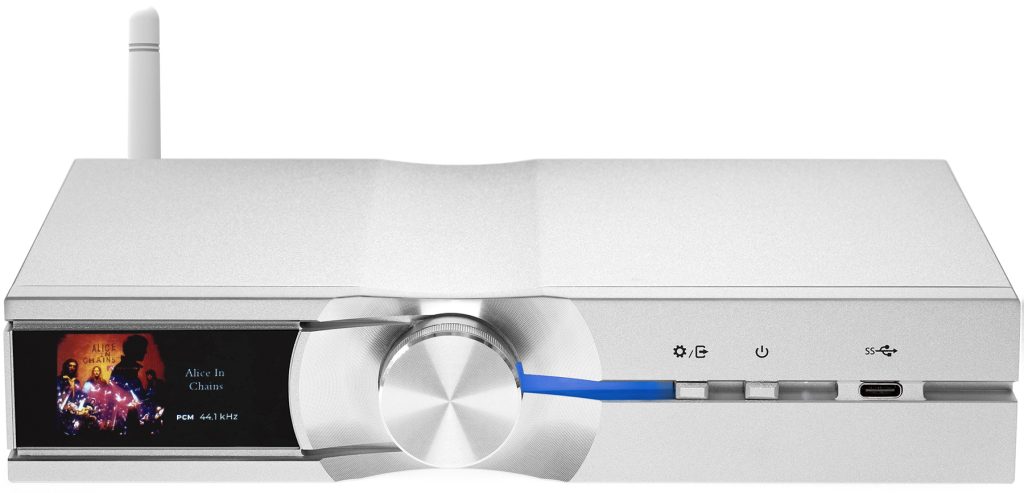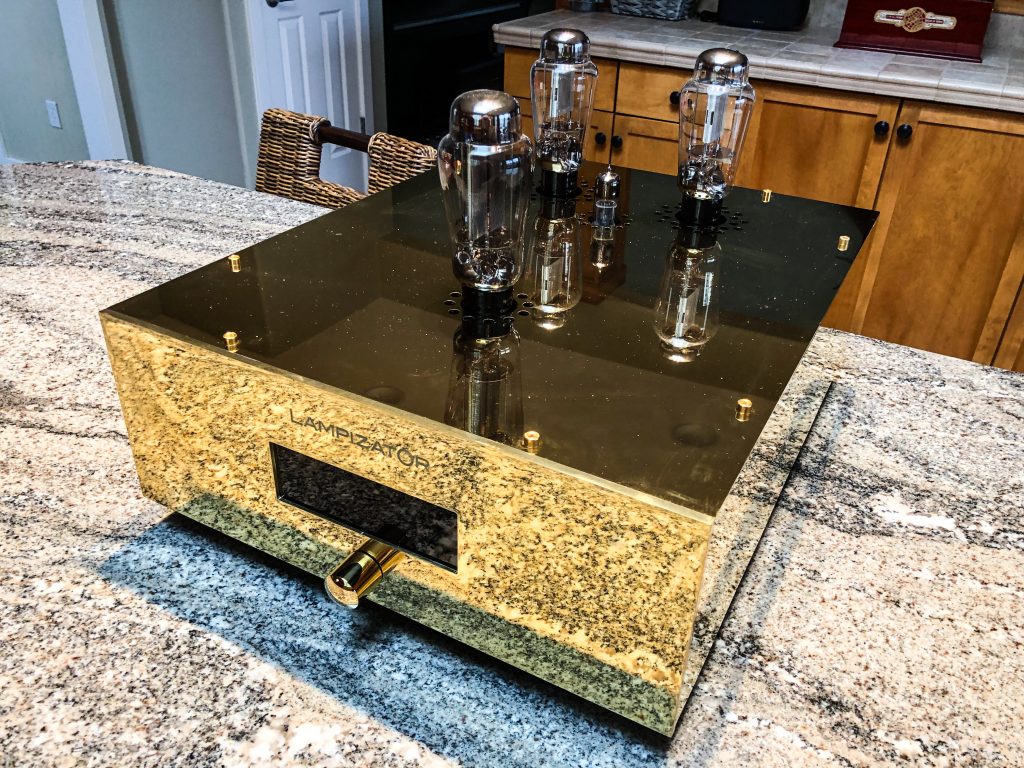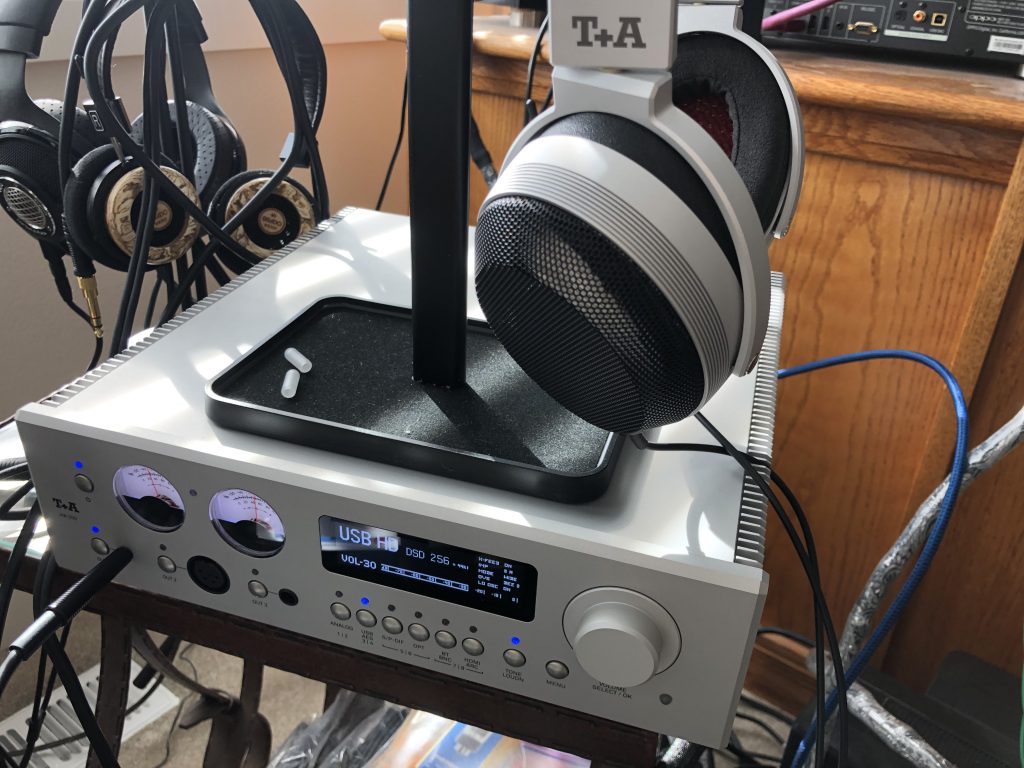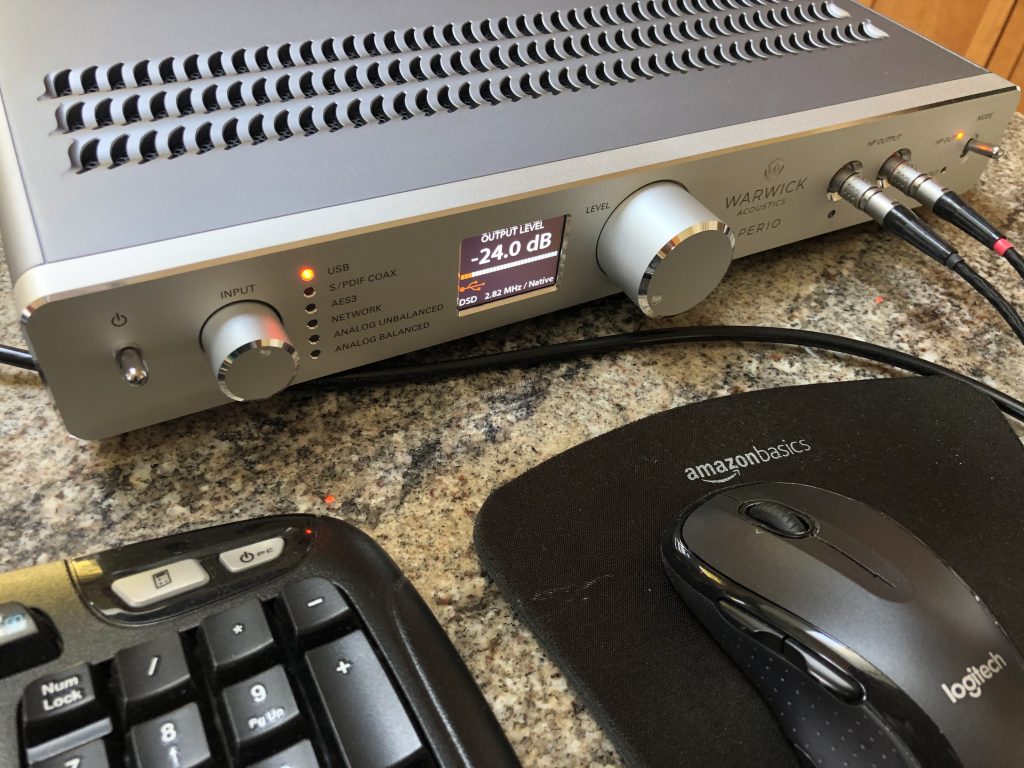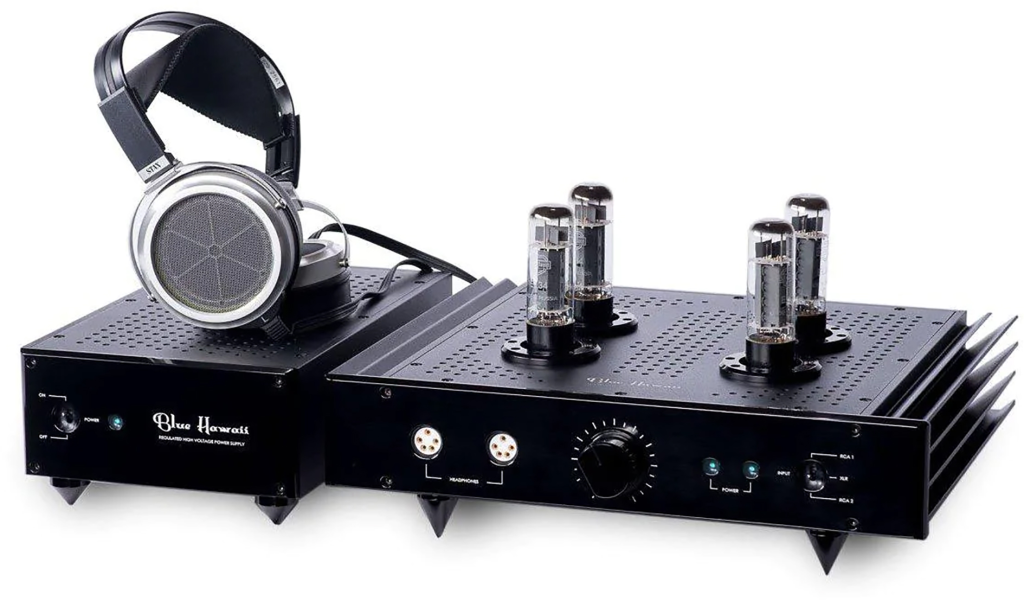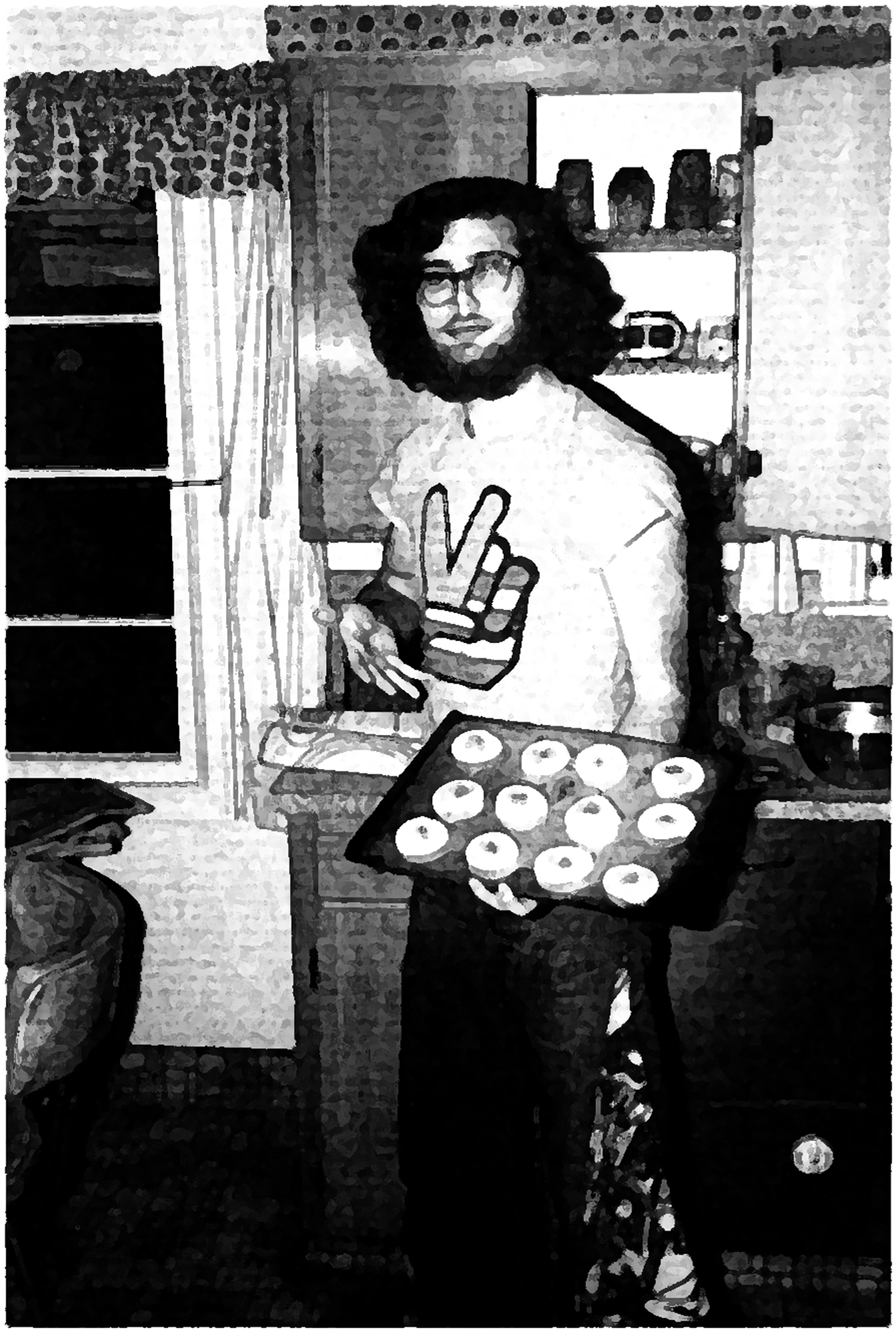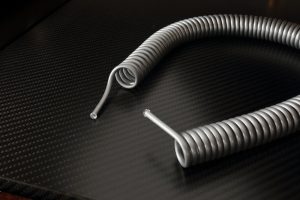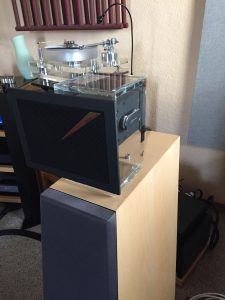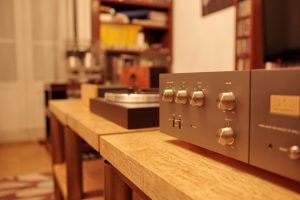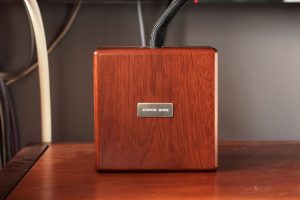The Critical Mass Systems QXK Mk. III Rack in Four-Shelf Configuration, photograph courtesy of Critical Mass Systems.
The latest chapter in a story…
Some designs and products that I review are from new companies. This is a very good thing; it shows that the world of fine audio remains vibrant, creative, and open to innovation. New names; new faces; new products; new gains. Then again, there are people and companies who've been around for quite a while. I've got long-range experience with their designs. They've put in their time, have demonstrated long-term quality and staying power, and quite often represent benchmarks of excellence in their areas of specialty.
In that latter category, I would certainly include Joe Lavrencik and Critical Mass Systems. Joe has been in the high-end audio biz for a number of years now, and deservedly so. His carefully worked out designs and products take a different vector from those of his competitors, and show a willingness to do things patiently, in his own way.
Jud Barber's Joule Electra Rite of Passage monoblock on Jud's recommended Critical Mass Systems amp stand, in my listening room back in 2005. The Joule Electra really shone with the CMS, and both won a Brutus Award from me that year.
We've been covering Joe and CMS for quite a while now. In fact, I gave one of my Brutus Awards to CMS all the way back in PF Issue 22, Nov/Dec 2005, (HERE), in conjunction with the classic Joule Electra Rite of Passage OTL monoblocks…God's half acre of tubes! Jud Barber of Joule Electra strongly recommended the CMS amp stands as the only ones he really liked. Dr. Sardonicus (Rick Gardner) reviewed one of the Critical Mass Systems rack systems with passion as early as Issue 38, Jul/Aug 2008, (HERE), and then returned to the subject again in Issue 40, Nov/Dec 2008 (HERE).
Nor were we alone. Since then, various Positive Feedback editors and writers have reviewed/commented on Critical Mass Systems racks, including their show awards: Myles Astor, Greg Weaver, Robert S. Youman, Malcolm J. Gomes, Pete Davey, Gary Lea, and Adam Goldfine. What has emerged over the years of reviewing and shows has been a strong consensus that Joe Lavrencik is doing something very right in his concepts, designs, and product line.
CMS Design Philosophy
Positive Feedback's Business Manager Lila Ritsema with Joe Lavrencik, both of them rejoicing over a marvelous bottle of Leonetti Cabernet Sauvignon…our favorite Cab, and the best that I know.
Joe Lavrencik doesn't have a formal design philosophy or designer's statement per se. I know, because I asked him for one. Perhaps somewhat abashed…Joe is a very mellow and self-effacing guy…he waved me off on that subject. So what I've done some is some mining of his thinking from his Web site. I don't think that Joe, who is a good audio friend, will mind if I synthesize his stance on the subject of audio racks.
Right up front, Joe makes it clear that he doesn't follow the path of rack designers who are seeking to isolate supported audio components from vibration. Instead, CMS products are intended to act as filters in the audio system chain:
"The term 'isolation' used in the context of any audio system is incorrect, in my view, and in the worst case could show a lack of understanding of the thermodynamic forces within a listening room. Loudspeakers are designed to create (in most cases) longitudinal mechanical waves that turn a listening room into a highly charged vibrating energy field. It is as impossible to isolate a component from vibration in a listening room as it is to isolate a car from water in a car wash. Even moving the component out of the room will not isolate it from its own vibrations. So, our designs purposely allow vibration to move upward and downward into the filter system where even the vibration of the rack and the filter system is subjected to a thermodynamic conversion. In simpler terms, it is an 'open' (filtering) system rather than a 'closed' (isolation) system.
Therefore, Critical Mass Systems racks are not isolation systems, as they do not prevent the transmission of vibration. Rather, the filter system manages the flow of vibration into and out of the component, as well as the rack architecture supporting it. Our proprietary internal vibration filtering materials and rack architecture operate together to mitigate vibration in the floor, the rack, the shelf, and the component at the same time. This ensures even energy transfer throughout the rack architecture and filter system so your component can retain the 'sound' that was intended, revealing the inner detail of the music."
I'll be commenting on the result that I'm hearing of this approach. Obviously, rather than attempting to disconnect from the sonic flow in a listening room, which is the heart of isolation as a core design element, Joe is looking to channel and shape the flow by filtering it.
He elucidates this by going on to say:
"Vibration is everywhere in the listening room. The moment loudspeakers produce sound, the sound creates vibration in the floor and the walls and ceiling as well as in the audio components themselves (loudspeakers, turntables, etc.). This vibration degrades the performance of the audio components' reproduction of music by interfering with the intended flow of sound from one component to another."
After years of experience with CMS designs, I think that's the key word in what Joe's doing: flow. Pay attention to that.
More on flow in a bit.
"With Critical Mass Systems rack systems, vibration passes into acoustically neutral, high-purity uniform metals, including specific certified aluminum, titanium, and tungsten carbide alloys to ensure even energy transfer throughout the rack architecture and transferring vibration into the filter systems so your component can retain the "sound" that was intended."
So the rack exists as a tight transmission…not isolation…system. It, in turn, acts as the foundation of the real heart of what CMS delivers: the CMS filters, which sit as shelves within that framework.
Joe goes on to address how this works synergistically in his filtering system:
"Constructed from proprietary internal vibration materials, our unique patented Dual Zone Damping System helps the filters manage vibration so that the signal processed by the electronics and analog devices sounds life-like and real when it the comes out of the loudspeakers. The filters and rack architecture operate together to mitigate vibration in the floor, the rack, the shelf and the component at the same time. The filter system works at its optimal level of performance with both very light and very heavy components without any adjustment to improve the sound of both digital and analog sound."
This is the overview of what is driving Joe's design work. It had been years since I had heard CMS in my own listening room; would his current designs advance what I remember experiencing before?
The CMS Project, 2016-2017 edition
Joe Lavrencik's partner Joy, a delightful person, and a major supporter of Joe's design work at CMS.
Starting a couple of years ago, Joe approached me at shows, saying that he was interested in having me revisit the latest generation of his design work. We agreed that since it had been quite a while since I had used one of his racks, we would try to arrange a visit from him to my listening room here in Oregon.
The best-laid plans being what they usually are, this took longer than I thought. We started to talk about this in passing at shows in 2014 and 2015, but it didn't actually gel until the fall of 2016. It was in October that Joe and his wife Joy were able to make it out with a QXK Rack and a pair of his amp stands.
Joe Lavrencik: A portrait just prior to commencing assembly of the QXK Rack.
The bad news: some assembly is required.
The good news: it's really very straightforward.
Joe Lavrencik assembling the QXK Rack…
…with each succeeding filter shelf being filled with components...here the BAT VK-53 SE Reference preamplifier is on the second shelf, just above the PS Audio PerfectWave P10.
Layer by layer the QXK ascended, with components being added as it arose.
Until, at the end, the four-layer rack was completed. Joy and Joe Lavrencik of Critical Mass Systems with the assembled CMS QXK Rack loaded with components, October of 2016.
The configuration of the rack, and the component placement were as follows:
Joe deployed a QXK Rack Framework, with a four filter setup. The Black Diamond Filter on top of rack led off. At the current time, we put the Playback Designs Merlot Quad DSD DAC and the Oppo BDP-103 with OpBox PLink output section as a transport. (This could change if we got another turntable in for review.) The next two shelves down were Black Platinum Filters. The upper of these two holds the Playback Designs Pinot Quad DSD ADC. The lower of the two has the Balanced Audio Technology VK-53 SE Reference preamplifier. The Black Sapphire Filter on the bottom is the location of our trusty PS Audio PerfectWave P10 Power Plant AC Regenerator.
The PS Audio PerfectWave P10 in place, in the early phases of assembling the CMS.
Across the way, we used one of the two Black Diamond Amplifier Stands as a platform for the Balanced Audio Technology VK-255 SE stereo amplifier. These employ the MXK spikes and cups.
So far, so good. A lot of component juggling and re-cabling, but the open back of the CMS rack made this fairly simple for two people to do. Unfortunately the space tolerances are fairly exacting in my listening room; it really does take two people to handle cables and connections properly. Joe was a big help with this.
CMS's "Mk. III" designation had me curious, however. I'm sure that the early products that I and Dr. Sardonicus reviewed had to have been Mk. I. What were the advances that led to the Mk. II and Mk. III levels? I asked Joe to comment on what had been done to advance the Critical Mass Systems designs over time. He was kind enough to summarize them:
"Over the last several years there have been tremendous advancements in analogue and electronic component design. The internal components of these devices have become much more precise and sensitive. Just as electromechanical component manufacturers improved signal processing, Critical Mass Systems developed methods to lower the noise floor under and inside these components to make these advancements and improvements to the musical envelope much more audible and coherent.
The MK2 design lowered the noise floor of all our previous designs by eliminating Delrin from the top plate of the damping systems. Delrin is a widely used material, but on close inspection its molecular lattice is not consistently liner in the vertical and horizontal planes. This allows vibration spikes to enter components thereby blurring pace, rhythm, timing, timbre, attack, bloom, decay, ambiance, bass, midrange, high frequencies and dynamics. This material was replaced with a molecularly consistent material that eliminated the vibration spikes and audibly improved every factor listed previously.
In addition a soft metal with a specific elastic modulus and thin rod speed was added to the internal damping structure that improved imaging and holography in the vocal range and slam in the power range by further lowering noise floor in these critical frequency bandwidths.
The MK2 design brought a clearly audible improvement to every aspect of the musical envelope by lowering noise floor without adding any coloration to electronic or analogue component functionality. Additionally, it did so without any roll off of high frequencies. High frequencies, properly and evenly presented, help to define bass, power range and every other aspect of the musical envelope.
The MK3 design took the improvements of the MK2 design and improved them by a factor of 3. The internal damping systems were upgraded from a 2-stage, dual zone damping system to a 6-stage dual zone damping system with 20 damping layers in the upper stage and 12 damping layers in the lower stage. This was done with a very precise process of adding materials into the damping system that first tilted the soundstage upward but then pulled it downward to neutral while stripping away hash and grain across the audible spectrum and leaving evenly-proportioned high frequencies in place. Pace, rhythm, timing, timbre, attack, bloom, decay, very low level ambiance, bass, mid-range, high frequencies, power range and all aspects of dynamic contrast are further enhanced within the component's electromechanical functional limits. It is important to me that readers understand that fully realizing the advancements of component design is dependent upon not only lowering noise floor inside and under the component, but doing so in a manner that does not change the way components create, process and transfer signals. The idea is to make sure that the DNA of the component is retained. This, I think, is the best way Critical Mass Systems can enhance the realism of reproduced music and support the evolution of our industry."
C'est bien, Joe! Merci beaucoup!
Thus, we now had things in place. The appearance of the QXK Mk. III is major plus, would dress up any listening room, and the racks are built like futuristic tanks, but the key question is always how does it help an audio system? Had the Mk. III generation exceeded what I remembered from many years ago?
The Sound
Photograph courtesy of Critical Mass Systems
The associated components and complete systems that we have had in place are all top-notch. The BAT preamplifier and amplifier are very revealing hybrid designs, yet with a great musicality. The GamuT Audio Zodiac Reference loudspeaker is a magnificent accomplishment, being full range and intensely rich and organic in its sound. Kubala-Sosna Elation! power cables and interconnects were used, with GamuT Audio speaker cables (quad-terminated bananas) carrying the final stage of the signal.
The results?
It was clear to me from the beginning that the Mk. III QXK rack system as configured is a truly impressive product system. The Mk. III generation definitely seems a step forward from my memories of the original CMS designs. As I reflect upon what I'm experiencing, one quality that I mentioned earlier is my starting point: flow.
The CMS rack and amplifier stand working in tandem provide a sense of musical connectedness, a rightness to what my audio friend Art Dudley memorably shorthanded as "PRAT": Pace, Rhythm, And Timing. This is the sort of thing I mean when I speak of flow…all of those qualities together. The musical linkage that ought to exist in audio playback, and the temporal meter, together with the rhythmic sense of a performance, should all be revealed in a reference-grade audio system, so that the full movement of the music shines forth.
More: There is a clarity to recordings with the CMS that is different from what I've heard from other rack systems. Rather than tending to quickness, liveliness, or ultra-detail, this rack combination brings real wholeness to the music. There's an organic oneness with all of my recordings, whether LP, SACD, or DSD…it doesn't matter. They all sound like a collective community of audio virtues. The CMS is quite obviously synergizing in a lovely way with the BAT VK-53 SE and VK-255 SE combination, and they in turn love the GamuT Audio Zodiacs.
Harvey "Gizmo" Rosenberg, he of the triodic headdress, with one of his beloved Tannoy Westminster loudspeakers. He was all over "sonic coolosity"! [Photograph courtesy of Harvey Rosenberg.]
Tonally, the CMS excelled. This is an expected outcome of my notes immediately above. All frequency ranges were well-balanced, with a harmonic rightness that enhanced a sense of musical ease and the naturalness of musical pitch and timbre. Dr. Gizmo (Harvey Rosenberg) would have called this "harmonic coolosity," and he'd be right. There is just the right touch of warmth in the tonal presentation of the CMS racks; again, the BAT gear and the Zodiac speakers are digging the CMS all day long.
I know. I've been listening for months now.
I should not slight the CMS's ability to provide very fine transparency, the king of all audio virtues in my book, and the foundation of all others. This is not done in a stereotypically crystalline way, however. Instead, there is clarity paired with a musical warmth that is very appealing. In fact, it's hard to separate these two elements in my estimation, since they are so inextricably bound in the musical results. Given the rich and organic sound (there's that phrase again) that the Zodiacs produce (GamuT Audio system review coming very shortly!), there's no gainsaying that CMS is a fantastic platform for BAT, Playback Designs, and the feed to the Zodiacs.
Detail (both micro and macro, for those accustomed to that distinction) is excellent with the CMS that we're using. As I've noted above, however, this is not a surgical quality here. I have heard some racks that really do slope towards the analytical in their presentation of the associated components. (This is especially and always with glass shelving, although I've heard two wooden rack systems that had this same problem.) This is always noticeable to my ear when I hear an upward tilt to the higher frequencies, and a whitish, glarish feel to the music. Sometimes a designer will characterize this as "air," "spaciousness," or "atmospheric," but acoustical racks make very poor equalizers, especially when someone has decided to lean (in both senses of the word) on the upper Hz's. Detail is good; etched, glaring sound is not. (Personally, I suspect that sometimes we're hearing the hearing of a designer who is losing 10kHz and above…but perhaps I'm wrong.)
With the CMS, this is not a problem. Detail is delivered in its musical content, period. Listening goes on for hours and hours. This is especially important to me because so much of what we listen to here is in the form of very high resolution digital and analogue. While hearing Quad DSD recordings, or LPs, it's supremely important
What of the much-ballyhooed "blackness"? This is the ability of audio components to deliver silence…quietude in a recording…without extraneous noise. With the CMS, no problem at all. Lots of inkiness here, for sure. With other racks I've had here over the years…well….
The presentation of soundstaging and imaging was excellent with this CMS configuration. In all fairness, though, that's generally true of many high-end rack designs. Only when racks introduce unwanted vibration into, say, a preamp, and that vibration is trapped aboard might you see smearing of details and a loss of clarity in imaging/soundstaging. There were no issues whatsoever with the CMS rack and amp stand. I know the dimensional capabilities of our listening room intimately; the CMS rack did really well in pushing to those limits.
Overall, the sonic results have been exceptional here, without any problems whatsoever.
Joy and Joe Lavrencik with the CMS Black Diamond Amplifier Stand holding the Balanced Audio Technology VK-255 SE Stereo Amplifier.
Conclusion
Final verdict?
The CMS QXK Mk. III rack and filtering system is a truly worthy design accomplishment by Joe Lavrencik. Its fine performance matched its striking appearance. Certainly, this is a component framework in which visual beauty meets aural beauty, and both live in contentment.
Given my extremely favorable experience with the Mk. III generation CMS Rack and Amp Stand, configured as described, I'd have to say that Joe Lavrencik and company have once again proven…all these years later…that they still belong in the very front rank of audio rack and stand designers. Joe's very innovative use of filtration, rather than isolation, produces a highly satisfying, intensely musical experience, regardless of source type. Whether I used LPs, SACDs, DSD downloads, or even a few CDs that were handled to DSD on Andreas Koch's Playback Designs OpBox/Merlot Quad DSD DAC, the CMS stand handled all resolutions with aplomb. The performance in every category was very fine, and the musical values reminded me of why I (and Dr. Sardonicus!) first fell in love with the CMS designs back in 2004-2005.
Only the Mk. III is even better than I remembered with the Joule Electra Rite of Passage amplifiers. And that's a high compliment!
It is true that a CMS system will cost you more than just a few dollars, but in this case you really do get what you pay for. And since the system is highly configurable, and CMS can do many things to meet even demanding requirements, you'll not have to bite off more than you can chew. Get exactly what you want, without excess.
But wait! There's even more!
As a side note, the CMS system that we tested does not represent their top-level reference configuration. That is their MAXXUM rack and filters (see HERE), which Joe designed for maximum performance, especially with turntables. Those of you who find this review to be enticing may want to check out this option.
The good news is that CMS says they might have a MAXXUM rack available to me for review later this year. If so, then I'll return, once again, to the CMS saga. I'd like to hear how their best-of-the-best performs….
Critical Mas Systems configuration, as evaluated, with prices
QXK Rack Framework, four component setup: $7980
Black Diamond Filter on top of rack: $2895
Black Platinum Filter on next two places down: $1895 x 2 = $3790
Black Sapphire Filter on the bottom placement: $995
Two Black Diamond Amp Stands: $2895 x 2 = $5790
MXK spikes and cups under the CMS Black Diamond Amp Stands = $195 per set of four
System total price, as evaluated: MSRP $21,840
Critical Mass Systems
www.criticalmasssystems.com
Dealer network, North America
www.criticalmasssystems.com/dealers_NA.html
Dealer network, International
www.criticalmasssystems.com/dealers_international.html
All photographs and image processing by David W. Robinson, unless otherwise noted. Cartoon by Dan Zimmerman.




